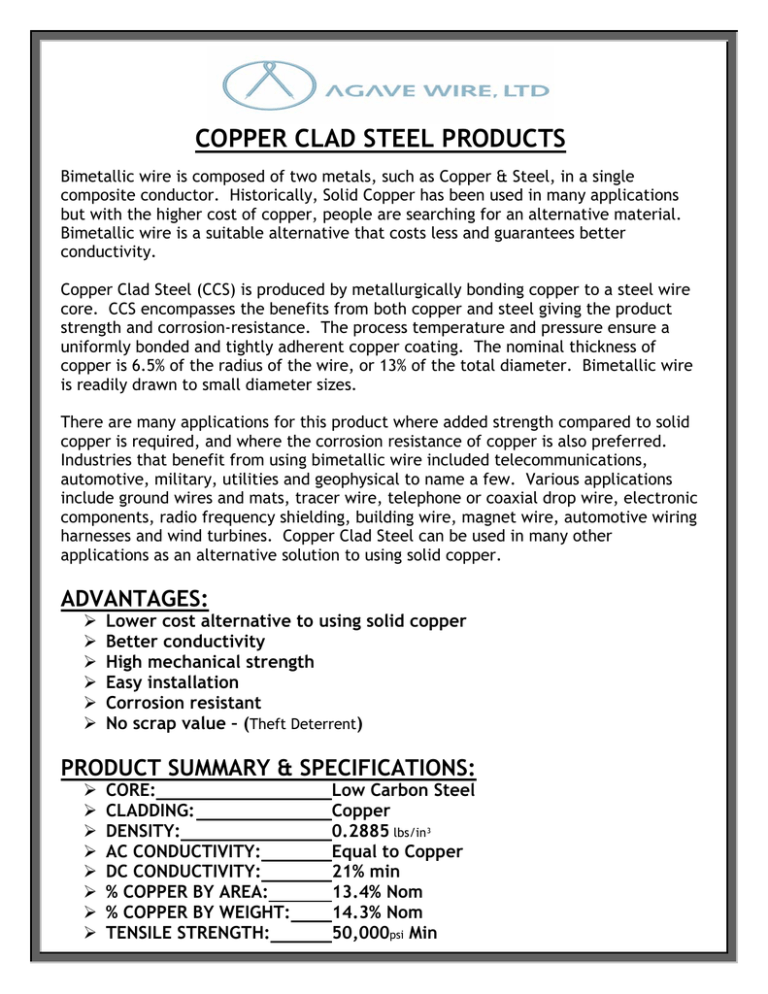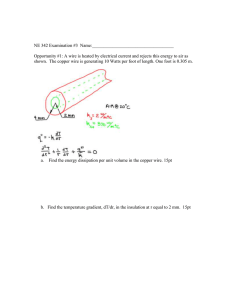copper clad steel products
advertisement

COPPER CLAD STEEL PRODUCTS Bimetallic wire is composed of two metals, such as Copper & Steel, in a single composite conductor. Historically, Solid Copper has been used in many applications but with the higher cost of copper, people are searching for an alternative material. Bimetallic wire is a suitable alternative that costs less and guarantees better conductivity. Copper Clad Steel (CCS) is produced by metallurgically bonding copper to a steel wire core. CCS encompasses the benefits from both copper and steel giving the product strength and corrosion-resistance. The process temperature and pressure ensure a uniformly bonded and tightly adherent copper coating. The nominal thickness of copper is 6.5% of the radius of the wire, or 13% of the total diameter. Bimetallic wire is readily drawn to small diameter sizes. There are many applications for this product where added strength compared to solid copper is required, and where the corrosion resistance of copper is also preferred. Industries that benefit from using bimetallic wire included telecommunications, automotive, military, utilities and geophysical to name a few. Various applications include ground wires and mats, tracer wire, telephone or coaxial drop wire, electronic components, radio frequency shielding, building wire, magnet wire, automotive wiring harnesses and wind turbines. Copper Clad Steel can be used in many other applications as an alternative solution to using solid copper. ADVANTAGES: ¾ ¾ ¾ ¾ ¾ ¾ Lower cost alternative to using solid copper Better conductivity High mechanical strength Easy installation Corrosion resistant No scrap value – (Theft Deterrent) PRODUCT SUMMARY & SPECIFICATIONS: ¾ ¾ ¾ ¾ ¾ ¾ ¾ ¾ CORE: CLADDING: DENSITY: AC CONDUCTIVITY: DC CONDUCTIVITY: % COPPER BY AREA: % COPPER BY WEIGHT: TENSILE STRENGTH: Low Carbon Steel Copper 0.2885 lbs/in³ Equal to Copper 21% min 13.4% Nom 14.3% Nom 50,000psi Min



